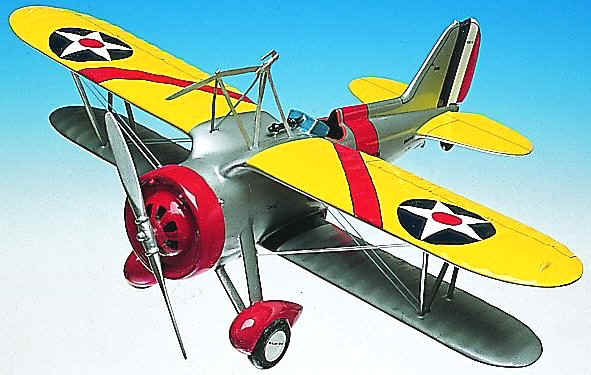|
|
|
 |
Curtiss F9C Sparrowhawk |
 |
|
In October 1928, contracts for the
construction of two 6.5 million cubic feet, rigid airships
(ZRS-4 Akron and ZRS-5 Macon) were issued by the
Navy to the Goodyear Zeppelin Corporation of Akron, Ohio. With
these design approvals for an airship 785 feet long with a range
of over 9,000 miles, the Navy entered into another realm of
flight - the use of dirigibles as airborne versions of aircraft
carriers that could launch, recover and hangar five aircraft
while airborne by means of a retractable trapeze extending below
the airship to which they could hook up. Of three aircraft
designs submitted for consideration, only the Curtiss XF9C-1 was
small enough to fit through the airship's arbitrarily designed
hangar door. Following conventional testing, it was fitted with
a sky hook and made its first hook-on to an experimental trapeze
on the USS Los Angeles in October 1931.
Following major design changes, six
production models of the XF9C-2 prototype were ordered and
designated as F9C-2 "Sparrowhawks". All six were
delivered in September 1932 and began operating as scouts from
the Akron which was lost a year later with no F9C-2s on
board. Flying continued from the Macon until she too was
lost along with four Sparrowhawks. In the course of
flying trials, landing gear were removed once the aircraft were
aboard the airship, depending thereafter upon their sky hooks
for launch and recovery. Landing gear were reinstalled before
aircraft left the airship to return to their home base. After the loss of the Macon, the two
surviving F9C-2s and the XF9C-2 remained in service for a year
or two as utility aircraft, and were ultimately cannibalized to
create the only F9C-2 Sparrowhawk in existence today (BuNo
9056). It is on loan from the National Air and Space Museum.
|
 |
Curtiss F9C
Sparrowhawk
Deluxe Series. 1/20th scale. 15.25" wingspan x
12.2" long.
No. ADN5D-DX. Only $169.95 |
|
